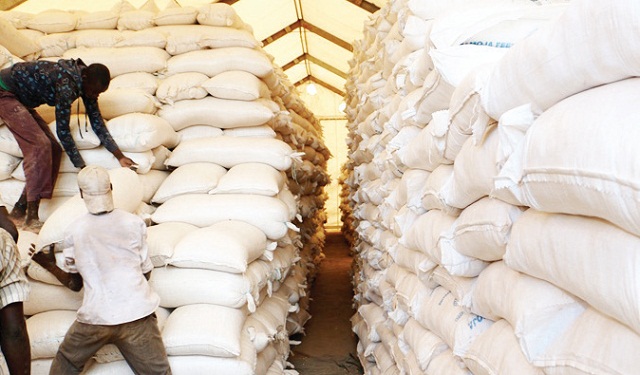
Bumper maize harvest exposes weakest link in food supply chain
Kampala, Uganda | RONALD MUSOKE | There is good news on Uganda’s food security front. The agriculture ministry estimates that Uganda has harvested about 5.5 million metric tonnes from the last planting season; which is a 38% increase from the usual harvest of about 4 million metric tonnes.
But the bad news follows. Charles Ogang, the president of the Uganda National Farmers Federation says the bumper harvest of maize – and beans – has exposed another problem smallholder farmers face; a lack of storage facilities.
“It’s the biggest headache Ugandan farmers are still grappling with,” Ogang told The Independent recently.
Ogang was speaking after the Minister of Agriculture, Animal Industry, and Fisheries, Vincent Bamulangaki Ssempijja, released the bumper harvest figures. Ssempijja said they are based on findings from supervision and monitoring conducted in all the districts.
“Last season, we had good rains across the country and we had a good crop,” Sempijja told The Independent at the Media Centre in Kampala where he briefed journalists. He had called the briefing to urge the media to encourage farmers to prepare early for the next rainy season that begins in March and ends in May.
“We learnt big lessons from last year’s devastating drought. After the lessons from the previous season we need to fight back so that we don’t encounter the same problems,” he said.
Ssempijja also attributed the good harvest to the government’s efforts to control the Fall Army Worm coupled with the National Agricultural Advisory Services (NAADS)’s efforts to supply quality seed and the efforts put in by individual farmers.
He advised farmers to properly dry the maize, beans, and groundnuts, which have already been harvested, on tarpaulins or raised platforms to maintain the quality. He said the dry harvest should be stored in hermetic bags to prevent attacks by weevils and cautioned that if the grain is stored when it is still wet, it becomes discoloured and of reduced quality.
“Wet grain is also attacked by mold which produces aflatoxins which make the grain unsafe for consumption by humans and livestock,” he said.
Pius Kasajja, the Agriculture Ministry’s Permanent Secretary, Dr. Samuel Mugasi, the executive director of the National Agricultural Advisory Services (NAADS), and Beatrice Byarugaba, the director agricultural extension services at the agriculture ministry, were also on hand to brief journalists.
Other experts, like Dr. Alex Barekye, the director of Research at the Kabale-based Kachwekano Zonal Agricultural Research and Development Institute in southern Uganda, said the 2016 season grain scarcity that had seen maize prices go to as high as Shs 1500 a kilo, also became a major stimulus for many farmers to grow maize this time round. Many farmers have also adapted to the current environmental challenges and quite a good number of them have embraced irrigation, Ogang added.
The positive mood all round is in sharp contrast to the situation the country faced exactly 12 months ago, in February 2017.
 The Independent Uganda: You get the Truth we Pay the Price
The Independent Uganda: You get the Truth we Pay the Price



